Disparities Emerge During COVID-19 Vaccine Shortage for Rural Patients
Key Takeaways
- Community pharmacists in Ontario became key players in COVID-19 vaccine distribution, especially in urban areas with high material deprivation and ethnic concentration.
- Urban areas defied the inverse care law, achieving better vaccine access in vulnerable communities compared to less deprived areas, even during shortages.
The study highlights disparities in COVID-19 vaccine access, revealing urban pharmacies excel while rural areas face significant challenges, urging policy changes for equity.
The COVID-19 pandemic catalyzed a paradigm shift in community pharmacy practice, showcasing pharmacists as vital frontline health care workers. Across Ontario, Canada, pharmacies took on expanded roles, serving as crucial sites for vaccine dissemination. However, a new geospatial analysis reveals that while this expansion largely succeeded in delivering equitable geographic access to COVID-19 vaccination in vulnerable urban communities, a severe disparity emerged, leaving rural residents behind, especially during periods of supply shortage.1,2
“We examined the geographic accessibility of Ontario community pharmacies offering COVID-19 vaccination in urban and rural areas considering the community-level material deprivation and ethnic concentration,” the study authors said.1 “While geographic accessibility changed over time, overall, materially deprived and ethnically concentrated urban areas demonstrated either better or similar geographic accessibility to pharmacies offering COVID-19 vaccine compared to less deprived and less ethnically concentrated areas.”
The role of the community pharmacist has evolved beyond dispensing medications to becoming major health care stakeholders in patient-centered care. Pharmacists are recognized as the most accessible health care professionals, with most patients living within walking distance of a community pharmacy. Leveraging this accessibility was critical during the vaccine rollout, yet the effectiveness of this geographic advantage varied dramatically based on location and vaccine availability.1,2
Urban Centers Defy the Inverse Care Law
In urban areas, the study found a promising trend, showing geographic accessibility to pharmacy-based vaccination services was often similar or higher in materially deprived and ethnically concentrated areas when compared to less vulnerable communities. This outcome is particularly significant because it runs counter to the long-standing principle known as the inverse care law, which posits that the availability of good medical care tends to vary inversely with the population’s need for it.2
For instance, during a period of extreme vaccine scarcity—May 12, 2021, as mentioned in the study—urban dissemination areas (DAs) in the highest quintile of ethnic concentration had an accessibility score of 6.55, strikingly higher than the score of 0.18 observed in the lowest ethnic concentration quintile. Similarly, the most materially deprived urban DAs (quintile 5) showed better accessibility scores than the least deprived areas during this critical shortage. During periods of intermediate or abundant vaccine supply later in 2021, these vulnerable urban areas maintained similar or higher geographic accessibility compared to their less deprived counterparts. These results suggest that tailored approaches, including community-led efforts and prioritizing supply allocation to high-need areas, may have helped promote vaccine equity in urban centers. This commitment to health equity aligns with the expanded roles community pharmacists are undertaking to provide health care access to populations often deprived due to geographic or socioeconomic constraints.1,2
The Unmet Need in Rural Communities
While urban areas showed relative success in achieving equitable access, the findings revealed a persistent and significant gap in rural Ontario. When vaccine supply was scarce, rural DAs had no geographic accessibility to pharmacies offering COVID-19 vaccination, meaning every rural DA was more than a 10,000-meter driving distance away from any participating pharmacy.2
This lack of access impacted approximately 17% of Ontario’s population, or about 2.5 million people, highlighting an ongoing equity challenge for patients living outside metropolitan areas. Furthermore, even when supply became intermediate or abundant, materially deprived rural areas generally experienced lower geographic accessibility to pharmacies compared to more affluent rural areas.2
Leveraging Pharmacy Expertise for Future Preparedness
These findings underscore the critical nature of the pharmacist’s role, especially in mass immunization programs. Community pharmacists, who are well aware of their patients’ needs and medical history, are perfectly positioned to vaccinate their communities as a crucial step toward achieving herd immunity. During the pandemic, the expanded roles of pharmacists also included providing telepharmacy and telehealth services, providing drug information, and dispelling misinformation—services vital for managing community health during a crisis. Medical staff on the front lines have high expectations for pharmacists, viewing them as drug therapy experts who should fully participate in clinical decision-making, including the assessment of drug interactions and complex medication regimens.1,3
However, realizing this full potential requires overcoming barriers. Pharmacists need proper training, adequate infrastructure for immunization services, and support to manage increased workload. Furthermore, despite their recognized clinical expertise, the integration of pharmacists with other teams, like nursing staff, sometimes lags, and real-time intervention may be insufficient, according to feedback from medical staff.1,3
To address the profound geographic gap exposed in rural areas during the COVID-19 rollout, future vaccine campaigns must incorporate proactive strategies. Policy solutions suggested by researchers include the deployment of mobile vaccination units or the establishment of temporary rural clinics during high-demand periods to reach sparsely populated regions without fixed-site pharmacy access. Integrating spatial accessibility data into real-time operational tools will be key to identifying these underserved areas and guiding timely resource deployment, ensuring that pharmacists can fulfill their critical mandate of providing universal health coverage and equity for all citizens.1,2
“Vaccine uptake can be influenced by behavioral factors such as vaccine hesitancy and lack of trust in health care systems or government initiatives. Social determinants, such as affordability, cultural beliefs, and historical contexts, can also play significant roles,” the authors said.1 “Addressing these aspects is essential for developing targeted interventions that promote vaccine acceptance.”
READ MORE:
Are you ready to elevate your pharmacy practice? Sign up today for our
REFERENCES
1. Pantasri T. Expanded roles of community pharmacists in COVID-19: A scoping literature review. J Am Pharm Assoc (2003). 2022;62(3):649-657. doi:10.1016/j.japh.2021.12.013
2. Alsabbagh MW, Wieland M, Pan S, Waite NM, Houle SKD, Grindrod K. Accessibility of Ontario pharmacies offering COVID-19 vaccination by rurality, community material deprivation, and ethnic concentration: a repeated cross-sectional geospatial analysis. BMC Public Health. 2025;25(1):3915. Published 2025 Nov 12. doi:10.1186/s12889-025-24929-w
3. Jia X, Zhang W, Du S, et al. What Is the Role of Pharmacists in Treating COVID-19 Patients? The Experiences and Expectations of Front Line Medical Staff. Front Public Health. 2021;9:778863. Published 2021 Dec 20. doi:10.3389/fpubh.2021.778863
Newsletter
Pharmacy practice is always changing. Stay ahead of the curve with the Drug Topics newsletter and get the latest drug information, industry trends, and patient care tips.













































































































































